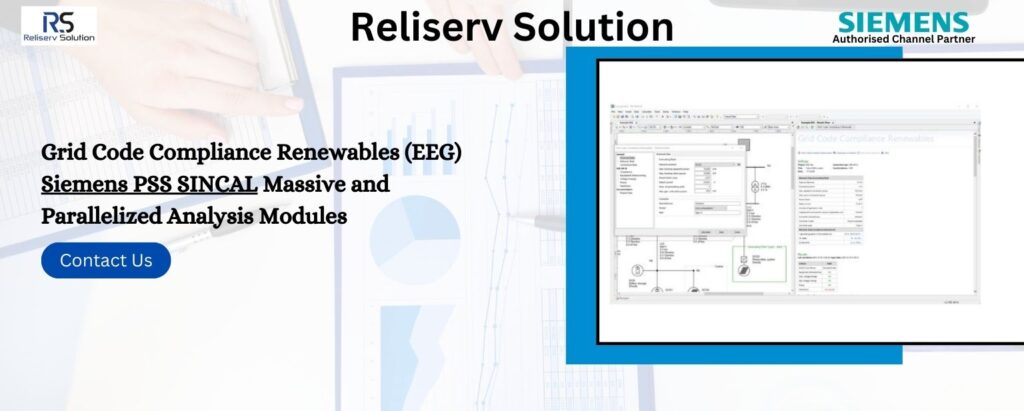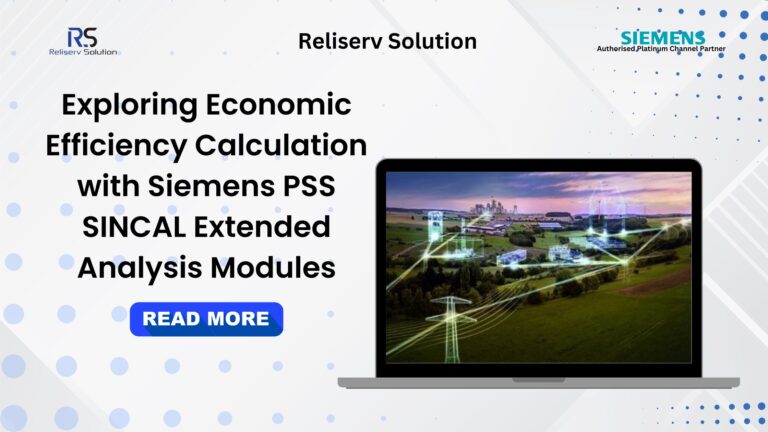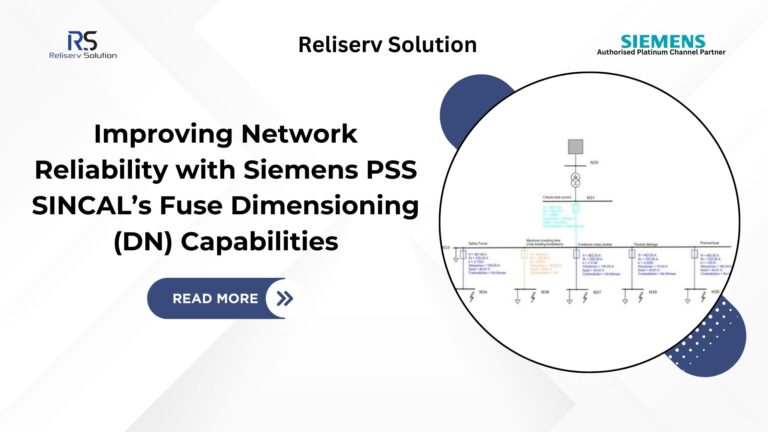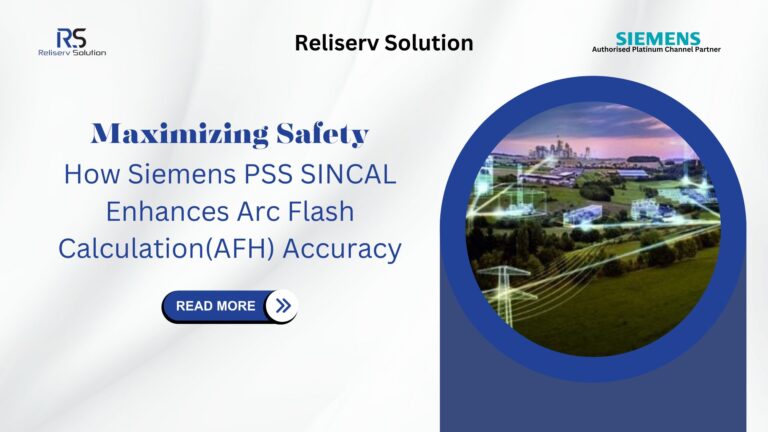As the world pivots towards sustainable energy solutions, the integration of renewable resources into existing power grids becomes paramount. Siemens PSS SINCAL emerges as a pioneering solution, offering cutting-edge tools to ensure grid code compliance while efficiently incorporating renewables. In this blog series, we delve into the intricate details of Siemens PSS SINCAL’s massive and parallelized modules, exploring how they revolutionize the analysis process, streamline operations, and pave the way for a seamless transition towards a renewable-powered future.
In our exploration, we uncover the transformative potential of Siemens PSS SINCAL’s capabilities, illuminating how its advanced algorithms and parallel processing techniques enable rapid analysis of complex grid scenarios. From assessing voltage stability to optimizing network configurations, these modules empower engineers and grid operators to navigate the challenges of renewable integration with precision and efficiency. Join us on this journey as we unravel the power of Siemens PSS SINCAL in shaping a resilient and sustainable energy landscape.
Introduction to Grid Code Compliance and its Significance
Grid code compliance plays a critical role in ensuring the smooth integration of renewable energy into existing power grids. Grid codes are sets of technical regulations and standards that govern the operation and behavior of electricity grids. These codes outline requirements for voltage levels, frequency control, and other parameters to maintain grid stability, reliability, and safety. Compliance with grid codes is essential to prevent disruptions in power supply, protect equipment, and maintain the overall integrity of the electrical grid.
The incorporation of decentralized energy resources, such as photovoltaic systems, wind turbines, and combined heat and power plants, into distribution networks is increasingly prevalent, especially at medium and low voltage levels. During the planning stage, many countries mandate that the connection conditions of these systems be assessed in the design phase, following procedures and criteria outlined in national standards and guidelines. Given the multitude of requests, often occurring concurrently, network operators must meticulously yet swiftly handle their processing and documentation.
- The implementation of a standardized procedure involves checking specified limit values for deviations in voltage, short-circuit behavior, and the emission of harmonic voltages, which constitutes the connection assessment process.
- Automated processing of assessments facilitates the handling of a significant volume of requests within a limited timeframe.
- Documentation and securing of the results of the connection verification are essential for technical and legal deliberations.
Benefits of Massive and Parallelized Modules
- The implementation of massive and parallelized modules within Siemens PSS SINCAL leads to streamlined analysis processes. By harnessing the power of parallel processing, the software can handle large datasets and complex calculations with remarkable efficiency. This streamlining significantly reduces the time and resources required for conducting analyses, allowing engineers and operators to focus on decision-making and problem-solving rather than waiting for lengthy computation times. Furthermore, streamlined analysis processes lead to increased productivity and responsiveness, enabling stakeholders to quickly adapt to changing grid conditions and optimize operational strategies for improved performance and reliability.
- Rapid assessment of complex grid scenarios is another key benefit provided by Siemens PSS SINCAL’s massive and parallelized modules. These modules enable users to simulate a wide range of scenarios, including varying load conditions, renewable energy penetration levels, and grid contingencies, with unprecedented speed and accuracy. By rapidly assessing these scenarios, engineers can identify potential challenges and opportunities in real time, allowing for proactive decision-making and risk management. This capability is particularly valuable in today’s dynamic energy landscape, where the integration of renewable resources introduces new complexities and uncertainties that must be carefully evaluated to ensure grid stability and resilience.
- The optimization of network configurations for enhanced performance is yet another advantage offered by Siemens PSS SINCAL’s massive and parallelized modules. These modules enable users to analyze the behavior of the electrical grid under different configurations and operating conditions, allowing for the identification of optimal network designs and operational strategies. By optimizing network configurations, utilities can minimize energy losses, improve voltage stability, and enhance overall grid performance. This optimization not only leads to cost savings and operational efficiencies but also contributes to the successful integration of renewable energy resources by ensuring that the grid can accommodate their variable and intermittent nature effectively.

Grid Code Compliance Renewables Solution
The verification of connection conditions within the EEG module in PSS SINCAL provides a dedicated screen interface for each step of the connection assessment by the network operator. Users are systematically guided through the data input for the DER system, the selection of the process and analysis area, the definition of respective limit values, and the execution of calculations and result evaluations.
- The integration of individual work steps into an efficient and defined workflow is achieved through a dedicated screen interface, requiring no additional modelling effort in the network model.
- Summary of the calculations necessary for the assessment, including load flow, short circuit, and optionally, harmonics.
- The default values adhere to the limit values specified in the standards and guidelines, with the option for users to adjust these values as needed.
- Automated assessment of the calculation outcomes against predefined limit values, accompanied by documentation.
Conclusion:
In conclusion, the journey through the realm of renewable integration and grid code compliance with Siemens PSS SINCAL’s massive and parallelized modules has been enlightening. We’ve witnessed how these advanced tools have the potential to revolutionize the way we approach renewable energy integration into existing power grids. By leveraging parallel processing and sophisticated algorithms, Siemens PSS SINCAL not only ensures compliance with stringent grid codes but also optimizes grid performance, enhancing stability and reliability in the face of increasing renewable penetration.
As we look towards the future, it’s evident that the role of Siemens PSS SINCAL will continue to be pivotal in facilitating the transition towards a sustainable energy landscape. With its capabilities to efficiently analyze complex grid scenarios, empower decision-makers, and drive innovation, Siemens PSS SINCAL stands as a beacon of hope in our journey towards a greener, more resilient future. Let us embrace these transformative technologies and harness the power of renewable energy integration to build a brighter tomorrow for generations to come.
For unbeatable offers on Siemens PSS SINCAL Massive and Parallelized Analysis Modules for Grid Code Compliance Renewables (EEG), reach out to Reliserv Solution. As an authorized supplier and Platinum Channel Partner of SIEMENS, Reliserv Solution provides a diverse range of automation products, power quality meters, MV switchgear spare parts, PSS SINCAL software, numerical relays, and more. Renowned for our commitment to excellence in the supply and export of Siemens PSS SINCAL software, we cater to various industries and panel builders. Contact us at +917506112097 or email your requirements to [email protected]. Explore our premium-quality Siemens Simulation Softwares: PSS SINCAL offerings by clicking here.



